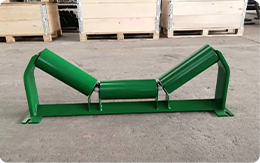 Afrikaans
Afrikaans  Albanian
Albanian  Amharic
Amharic  Arabic
Arabic  Armenian
Armenian  Azerbaijani
Azerbaijani  Basque
Basque  Belarusian
Belarusian  Bengali
Bengali  Bosnian
Bosnian  Bulgarian
Bulgarian  Catalan
Catalan  Cebuano
Cebuano  Corsican
Corsican  Croatian
Croatian  Czech
Czech  Danish
Danish  Dutch
Dutch  English
English  Esperanto
Esperanto  Estonian
Estonian  Finnish
Finnish  French
French  Frisian
Frisian  Galician
Galician  Georgian
Georgian  German
German  Greek
Greek  Gujarati
Gujarati  Haitian Creole
Haitian Creole  hausa
hausa  hawaiian
hawaiian  Hebrew
Hebrew  Hindi
Hindi  Miao
Miao  Hungarian
Hungarian  Icelandic
Icelandic  igbo
igbo  Indonesian
Indonesian  irish
irish  Italian
Italian  Japanese
Japanese  Javanese
Javanese  Kannada
Kannada  kazakh
kazakh  Khmer
Khmer  Rwandese
Rwandese  Korean
Korean  Kurdish
Kurdish  Kyrgyz
Kyrgyz  Lao
Lao  Latin
Latin  Latvian
Latvian  Lithuanian
Lithuanian  Luxembourgish
Luxembourgish  Macedonian
Macedonian  Malgashi
Malgashi  Malay
Malay  Malayalam
Malayalam  Maltese
Maltese  Maori
Maori  Marathi
Marathi  Mongolian
Mongolian  Myanmar
Myanmar  Nepali
Nepali  Norwegian
Norwegian  Norwegian
Norwegian  Occitan
Occitan  Pashto
Pashto  Persian
Persian  Polish
Polish  Portuguese
Portuguese  Punjabi
Punjabi  Romanian
Romanian  Russian
Russian  Samoan
Samoan  Scottish Gaelic
Scottish Gaelic  Serbian
Serbian  Sesotho
Sesotho  Shona
Shona  Sindhi
Sindhi  Sinhala
Sinhala  Slovak
Slovak  Slovenian
Slovenian  Somali
Somali  Spanish
Spanish  Sundanese
Sundanese  Swahili
Swahili  Swedish
Swedish  Tagalog
Tagalog  Tajik
Tajik  Tamil
Tamil  Tatar
Tatar  Telugu
Telugu  Thai
Thai  Turkish
Turkish  Turkmen
Turkmen  Ukrainian
Ukrainian  Urdu
Urdu  Uighur
Uighur  Uzbek
Uzbek  Vietnamese
Vietnamese  Welsh
Welsh  Bantu
Bantu  Yiddish
Yiddish  Yoruba
Yoruba  Zulu
Zulu Understanding the Importance of Conveyor Idlers in Material Handling Systems
Understanding Conveyor Idlers A Key Component in Bulk Material Handling
In the world of bulk material handling, conveyor systems play an essential role in the transport of various materials across different industries. At the heart of these systems lie conveyor idlers, fundamental components that facilitate the smooth and efficient movement of materials. This article delves into the design, function, and importance of conveyor idlers in enhancing the operational efficiency of conveyor belts.
What Are Conveyor Idlers?
Conveyor idlers are cylindrical rolls that support the conveyor belt and the materials being transported. Positioned along the length of the conveyor system, these rolls help maintain the belt's tension, provide stability, and reduce friction, which is crucial for efficient material handling. Idlers come in various configurations and sizes, catering to the diverse requirements of different conveyor systems and the types of materials being conveyed.
Types of Conveyor Idlers
There are several types of conveyor idlers, each tailored to specific applications and environments. The most common types include
1. Standard Idlers These are the basic idlers used in most conveyor applications. They support the belt and are usually designed to handle moderate loads.
2. Impact Idlers Positioned at loading points, these idlers are designed to absorb the shock and impact of material loading, thus protecting the belt and extending its lifespan.
4. Training Idlers These idlers help align the conveyor belt and prevent mistracking, ensuring that the belt stays centered and operates smoothly.
conveyor idlers

The Role of Conveyor Idlers
Conveyor idlers are vital for several reasons
1. Load Support Idlers provide essential support for the conveyor belt, allowing it to carry heavy loads without excessive sagging, which could lead to material spillages or belt damage.
2. Friction Reduction By allowing the belt to glide smoothly over the idlers, the system reduces frictional forces, which can lead to wear and tear over time. This friction reduction is crucial for the efficient operation of conveyor systems, as it directly impacts the energy consumption of the conveyor.
3. Belt Alignment Properly designed idlers help maintain the alignment of the conveyor belt. Mistracking can lead to uneven wear, material loss, and costly downtimes. Training idlers play a critical role in ensuring proper belt alignment throughout the system.
4. Vibration Dampening Impact idlers can absorb vibrations from material loading, which helps protect the conveyor structure and prolong the life of the components involved.
Importance of Maintenance
Regular maintenance of conveyor idlers is essential to ensure their longevity and the efficient operation of the entire conveyor system. Inspecting idlers for wear, alignment, and lubrication can prevent unexpected breakdowns and costly repairs. Businesses should establish a routine maintenance schedule, including cleaning and replacing worn idler rolls.
Conclusion
Conveyor idlers are indispensable in the realm of bulk material handling. They provide essential support, reduce friction, and help maintain the proper alignment of conveyor belts. Understanding the types and functions of idlers can assist industries in optimizing their conveyor systems for improved efficiency and reduced operational costs. As industries continue to evolve and demand higher productivity levels, investing in high-quality conveyor idlers and their maintenance is a strategic move that can lead to significant benefits in the long run.
-
Revolutionizing Conveyor Reliability with Advanced Rubber Lagging PulleysNewsJul.22,2025
-
Powering Precision and Durability with Expert Manufacturers of Conveyor ComponentsNewsJul.22,2025
-
Optimizing Conveyor Systems with Advanced Conveyor AccessoriesNewsJul.22,2025
-
Maximize Conveyor Efficiency with Quality Conveyor Idler PulleysNewsJul.22,2025
-
Future-Proof Your Conveyor System with High-Performance Polyurethane RollerNewsJul.22,2025
-
Driving Efficiency Forward with Quality Idlers and RollersNewsJul.22,2025





























